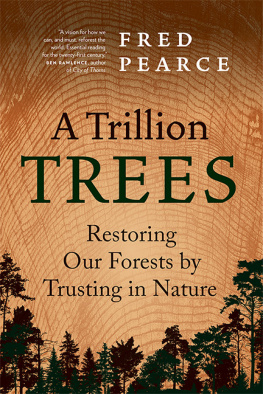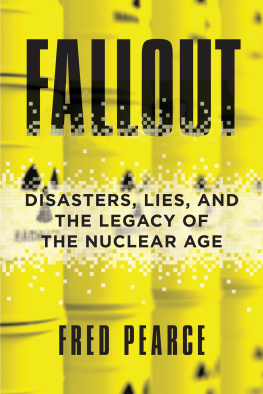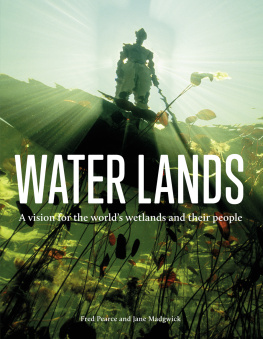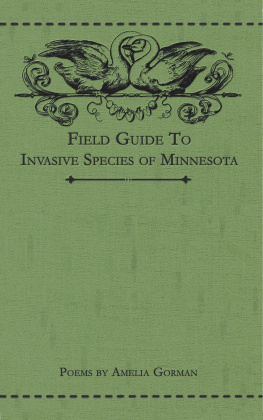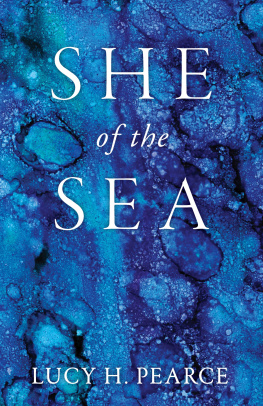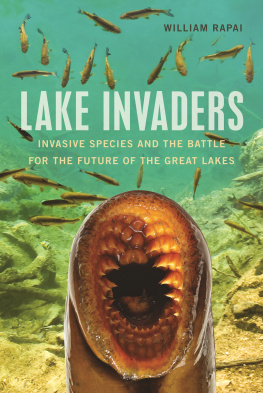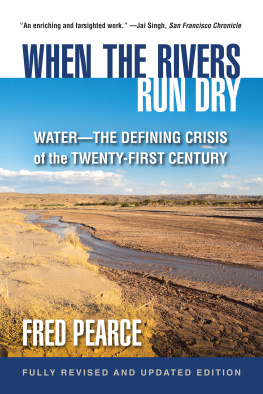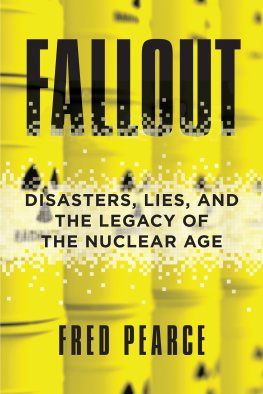ALSO BY FRED PEARCE
When the Rivers Run Dry: WaterThe Defining Crisis of the Twenty-First Century
With Speed and Violence: Why Scientists Fear Tipping Points in Climate Change
Confessions of an Eco-Sinner: Tracking Down the Sources of My Stuff
The Coming Population Crash and Our Planets Surprising Future
The Land Grabbers: The New Fight over Who Owns the Earth
THE NEW WILD
WHY INVASIVE SPECIES WILL BE NATURES SALVATION
FRED PEARCE

CONTENTS
ON LANGUAGE
I have used a lot of words in this book to describe species moving to new places. Most frequently I call them aliens, not in a pejorative sense but to describe their status. More for variety than anything else, I also call them vagabonds, invaders, carpetbaggers, migrants, interlopers, nonnatives, incomers, and no doubt more. Humans carried some aliens deliberately or accidentally; others arrived by more traditional means, borne by winds and waves or under their own terrestrial, marine, or airborne propulsion. I save the adjective introduced for those carried by humans. For some ecologists, invasive has a particular meaning. It applies to those aliens making waves and taking territory. Equally, when species settle down and appear at home they will be termed by some naturalized. I generally follow the practice, using both terms. But please judge the species I describe by what they do or dont do and not by the label attached to them.
Some people like the Latin names of plants and animals, and sometimes they are necessary to clear up confusion. But they do get in the way. So I have included Latin names in the main text for the main species and taxa when I first mention them, but not for bit-part players. For those, where the context allows me to be specific about individual species, and where I think readers may be interested, I have posted an appendix containing some common names and their Latin versions.
ACRONYMS
BBCBritish Broadcasting Corporation
CBDConvention on Biological Diversity
DDTdichlorodiphenyltrichloroethane, a pesticide
FAOFood and Agriculture Organization of the United Nations
GCHQGovernment Communications Headquarters (UK)
IPCCIntergovernmental Panel on Climate Change
IUCNInternational Union for the Conservation of Nature
JKJapanese knotweed
MEAMillennium Ecosystem Assessment
MITMassachusetts Institute of Technology
NSANational Security Agency (US)
RSPBRoyal Society for the Protection of Birds
TNCThe Nature Conservancy
UCUniversity of California
UNEPUnited Nations Environment Programme
UNESCOUnited Nations Educational, Scientific and Cultural Organization
USGSUS Geological Survey
WRIWorld Resources Institute
WWFWorld Wildlife Fund
INTRODUCTION
Nature in a World of Humans
Rogue rats, predatory jellyfish, suffocating super-weeds, wild boar, snakehead fish wriggling across the landalien species are taking over. Natures vagabonds, ruffians, and carpetbaggers are headed for an ecosystem near you. These biological adventurers are traveling the world in ever greater numbers, hitchhiking in our luggage, hidden in cargo holds, stuck to the bottom of ships, and migrating to keep up with climate change. Todays human-dominated world of globalized trade and messed-up ecosystems is giving footloose species many more chances to cruise the planet and set up home in distant lands. Some run riot, massacring local species, trashing their new habitats, and spreading diseases.
Most of us like a simple story with good guys and bad guys, and aliens always make easy enemies. So the threat of foreign species invading fragile environments and causing ecological mayhem gets our attention. Conservationists have for half a century been battling to hold back the tide of aliens. They call them the second biggest threat to nature, after habitat loss. Their concern is laudable. They want to protect native species and the ecosystems they inhabit. But do we fear these ecological outsiders too much? Most environmentalists would recoil to think this, but maybe our fear is sometimes little more than green xenophobia. Most of us are appalled when foreign humans are treated as somehow intrinsically dangerous. Yet the orthodoxy in conservation is to demonize foreign species in just that way. Native is good and alien is bad. But is this simple formula true? Or might we need the go-getter, can-do aliens? Might their success be a sign of natures resilience in the face of the considerable damage humans have done to the planet?
I am an environmental journalist. Even to ask such questions gets me treated in some circles as a conservation heretic. I have met incredulity and hostility in equal measure. To be clear, I am not accusing environmentalists of being closet xenophobes or misanthropes, still less racists. But I have also found that I am far from alone in my concern that we have bought into some dangerous mythology about how nature works.
I am not questioning the motivesto strengthen naturebut the means. Many ecologists who actually study nature have told me that they feel conservationists are, with the best of intentions, getting the aliens wrong. And worse, that their efforts to keep out all foreign invaders of ecosystems might often be counterproductive, weakening nature rather than strengthening it. I have discovered that there is a scientific backlash against the simple formula that natives are good and aliens bad. The purpose of this book is to explore that new thinking and to ask what it should mean for conservation.
My conclusion is that mainstream conservationists are right that we need a rewilding of the Earth, but they are wrong if they imagine that we can achieve that by going backward. We need a new wildhence the title of this book. But the new wild will be very different from the old wild. We have changed our planet too much, and nature never goes backward. Natures resilience is increasingly expressed in the strength and colonizing abilities of alien species. They are often the new natives. And in the new wild, we need to stand back and applaud.
There are horror stories about alien takeovers, of course. Most of those stories are set on small remote islands with only a few native species, where carnivorous rats, cats, and others hop off ships and cause mayhem. But elsewhere, most of the time, the tens of thousands of introduced species usually either swiftly die out or settle down and become model eco-citizens, pollinating crops, spreading seeds, controlling predators, and providing food and habitat for native species. They rarely eliminate natives. Rather than reducing biodiversity, the novel new worlds that result are usually richer in species than what went before. Even the terrorists of the conservation world, such as zebra mussels and tamarisk, Japanese knotweed and water hyacinth, often have a good side we rarely hear about.
After going on the trail of alien species across six continents, my conclusion is that their demonization says more about us and our fears of change than about them and their behavior. Some ardent wildlife lovers show a dark side when it comes to aliens. I sometimes think the more ardent they are, the more likely they are to be rabid about alien species. Understandable love of the local, the native, and the familiarof an imagined pristine environment before humans showed uptoo often becomes fear and hatred of the foreign and the unfamiliar.



